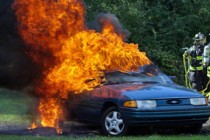Volkswagen Test Rigging Follows A Long Auto Industry Pattern
by Danny Hakim and Hiroko Tabuchi, The New York Times
Long before Volkswagen admitted to cheating on emissions tests for millions of cars worldwide, the automobile industry, Volkswagen included, had a well-known record of sidestepping regulation and even duping regulators.
For decades, car companies found ways to rig mileage and emissions testing data. In Europe, some automakers have taped up test cars’ doors and grilles to bolster the aerodynamics. Others have used “superlubricants” to reduce friction in the car’s engine to a degree that would be impossible in real-world driving conditions.
Automakers have even been known to make test vehicles lighter by removing the back seats.
Cheating in the United States started as soon as governments began regulating automotive emissions in the early 1970s. In 1972, certification of Ford Motor’s new cars was held up after the Environmental Protection Agency found that the company had violated rules by performing constant maintenance of its test cars, which lowered emissions but did not reflect driving conditions in the real world. Ford walked away with a $7 million fine.
The next year, the agency fined Volkswagen $120,000 after finding that the company had installed devices intended specifically to shut down a vehicle’s pollution control systems. In 1974, Chrysler had to recall more than 800,000 cars because similar devices were found in the radiators of its cars.
Continue reading on the New York Times website » The Times limits free pageviews per month.
Tags: Auto Safety, Deceptive
